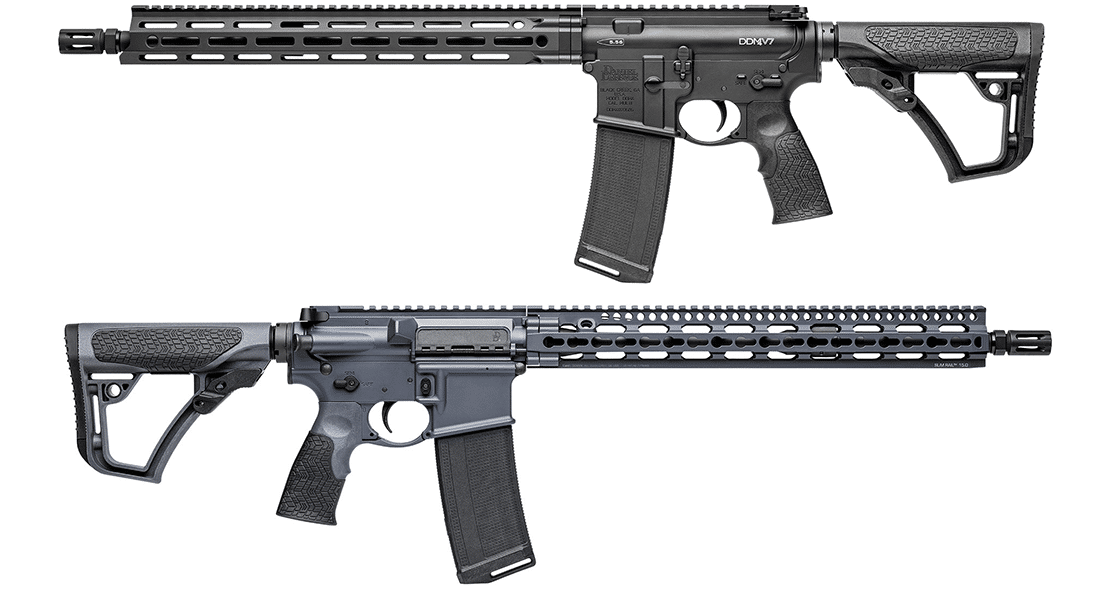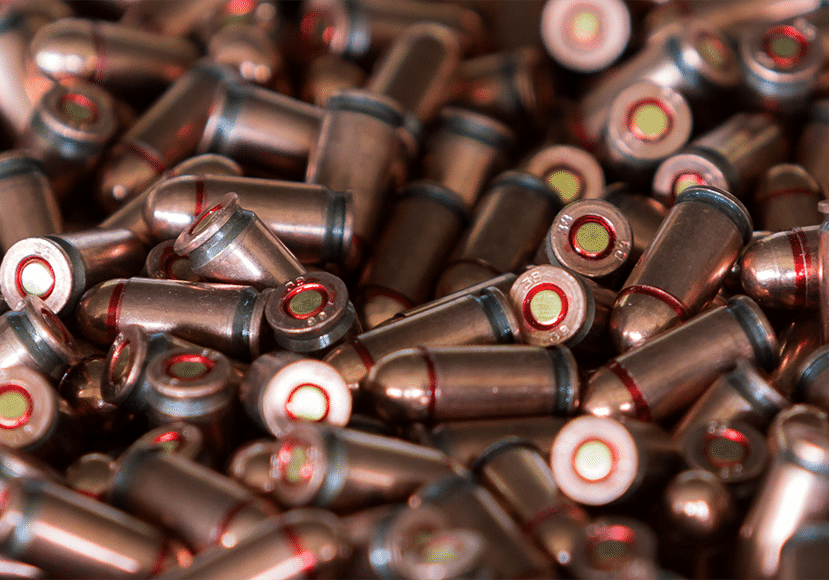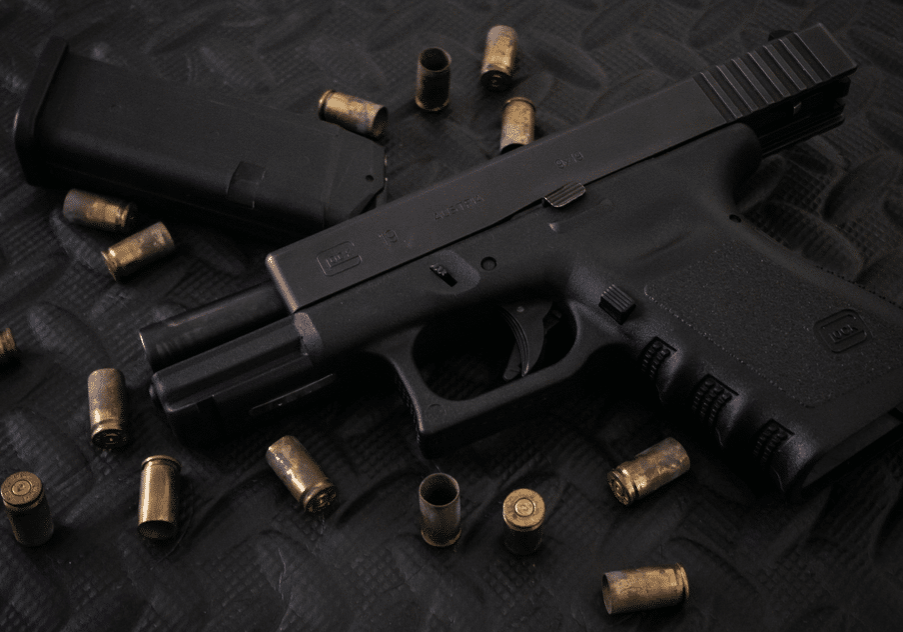M-LOK vs KeyMod – U.S. Military Determines a Clear Winner

A few carefully chosen accessories can transform a vanilla AR-15 into one that perfectly fits your needs. From bipods to flashlights to optics, choosing which accessories you want on your rifle is completely up to you, but before you get carried away accessorizing, you’ll have to decide how you’re going to mount them.
Nowadays there are three main AR-15 mounting systems: Picatinny rails, KeyMods, and M-LOKs.
The Picatinny rail is the geezer of the bunch, having been in widespread use since its invention in the early 1990s. The MIL-STD-1913 rail, as it is often called, was designed by the Picatinny Arsenal in New Jersey at the request of the U.S. Army, who was looking for a superior rail interface system for mounting scopes on the receivers of large-caliber rifles. Picatinny rails can now be used for mounting all kinds of accessories, including foregrips, bipods, flashlights and the rest.

Daniel Defense AR-15 With Quad Picatinny Rail
While Picatinny rails offer significant improvements over earlier mounting systems, they are not without their faults, the most obvious of which is that they add a good deal of unnecessary weight toward a rifle’s front end. With this shortcoming in mind, a couple of young-buck mounting systems have emerged in recent years that offer similar mounting capabilities with lower profiles and less weight. These, of course, are KeyMod and M-LOK.
The remainder of this guide will explore the differences between KeyMod vs M-LOK rail systems and help you to make an informed choice between the two.
(Check Out the List of Our Best AR-15 Handguards)
KeyMod
The first of the two newcomers is KeyMod, named for its keyhole-shaped mounting slots and modular design. The KeyMod rail system was first produced in 2012 by VLTOR Weapon Systems and Noveske Rifleworks in an effort to standardize attachment systems in the firearms accessories market. To that end, KeyMod is open source, meaning any manufacturer can produce accessories using the system without having to get permission from its inventors—and without having to pay them royalties.

Daniel Defense AR-15 With Picatinny Rail On Top, KeyMod on Sides and Bottom
The KeyMod system is great for three reasons: it’s lightweight, it supports every kind of attachment, and it makes accessory installation incredibly easy—simply insert a compatible accessory’s lugs into the wide end of the keyhole, slide them to the narrow end, and screw them in.
The biggest downside to the KeyMod design is that it does not have the same level of industry support as other systems, especially M-LOK. It’s true that the KeyMod system supports every kind of attachment, but it doesn’t give you quite as many products to choose from as other platforms.
To be fair though, you could always attach a strip of picatinny rail to the KeyMod, which should allow you to use nearly any accessory you want.
With KeyMod out of the way, let’s take a look at its biggest competitor, M-LOK.
M-LOK
The M-LOK mounting system was released in 2014 by industry giant Magpul, known for their polymer AR-15 magazines and accessories, as an evolution of their MOE mounting system. The system works in essentially the same way as KeyMod, but with a couple of important differences. Namely, M-LOK replaces KeyMod’s keyholes with elongated slots and KeyMod’s circular lugs with T-shaped lugs. While these differences might sound trivial, they give the M-LOK system two significant advantages over their competition.

Daniel Defense AR-15 With Picatinny Rail on Top, M-LOK on Sides and Bottom
For one, due to the fact that the M-LOK’s slots are the same shape and width all the way across, you have the option to mount your accessories anywhere along the length of the slot. This is in contrast to the KeyMod system, which requires you to mount accessories on the rear, narrow end of the keyhole. The flexibility afforded by the M-LOK design can be really helpful in getting your accessories just right.
The second, more significant, advantage of the M-LOK design is that it seems to perform better. A recent study conducted by U.S. SOCOM compared M-LOK and KeyMod mounts made by the same manufacturers on five metrics: “repeatability, endurance, rough handling, drop testing, and failure load.”
Without getting bogged down in the details of how these qualities were tested (see the above link if you’re curious), the study showed that M-LOK significantly outperformed KeyMod on three of the five metrics, with the remaining two tests showing no difference between them:
Repeatability
– M-LOK™ achieved a 73% improvement in average POA shift over KeyMod™.
Endurance
– KeyMod™ and M-LOK™ system performance exceeded cyclic load test conditions.
Rough Handling
– KeyMod™ and M-LOK™ system performance exceeded cyclic load test conditions.
Drop test
– 100% of M-LOK™ accessories remained attached.
• 1/3 M-LOK™ accessories remained in-place.
• 2/3 M-LOK™ accessories slid rearwards but remained secure.
– 33% of KeyMod™ accessories remained attached.
• 1/3 KeyMod™ accessories remained attached, but severely damaged handguard.
• 2/3 KeyMod™ accessories completely detached.
Failure Load
– Average M-LOK™ test failure load over 3 times greater than average KeyMod™ system
failure load.
– All KeyMod™ failures occurred at the interface between the handguard and accessory rail.
– All M-LOK™ system tests failed at weapon light mount or mount to accessory rail interface.

In short, these tests show that M-LOK mounts are better at “maintaining point of aim for mounted accessories during normal mounting and remounting”, do a better job of keeping accessories attached when a rifle is dropped, and make accessories more difficult to pull off—all of which are significant considerations if you’re currently trying to choose between the two systems.
M-Lok vs KeyMod Conclusion
So does that settle the debate? Is KeyMod obsolete?
Not quite.
While the above study certainly doesn’t bode well for KeyMod, there are a few caveats to consider. For one, this is just one study. The results were conclusive enough for SOCOM to confidently move forward with M-LOK over KeyMod, but further studies will be needed to confirm SOCOM’s findings.
Second, M-LOK’s superior performance in the SOCOM study was dependent upon installing attachments correctly, which, as many gun owners will confirm, can be noticeably more difficult for M-LOK mounts than for KeyMod.
Finally, even if KeyMod mounts are inferior to M-LOKs in some respects, they are likely to be good enough for the average AR-15 user. Most of us are not bringing our rifles with us into serious combat, nor are we habitually unmounting and re-mounting our rail systems unnecessarily. Furthermore, it’s unlikely that you’re going to drop your rifle at the range, and even if you did, you’d be able to re-mount any attachments that had fallen off without consequence.
Point being, there are some excellent KeyMod handguards out there, and if one of them strikes your fancy in spite of the design’s shortcomings, by all means, go for it.
That being said, if you’re concerned about getting the very best, there’s no reason not to choose M-LOK; it’s arguably the most popular mounting system available today and even the military has deemed it superior, so you’ll be in great company.
Ready to Pick Out a Handguard? Check Out Our List of the Best AR-15 Handguards. Also check out our full list of AR-15 parts recommendations.




